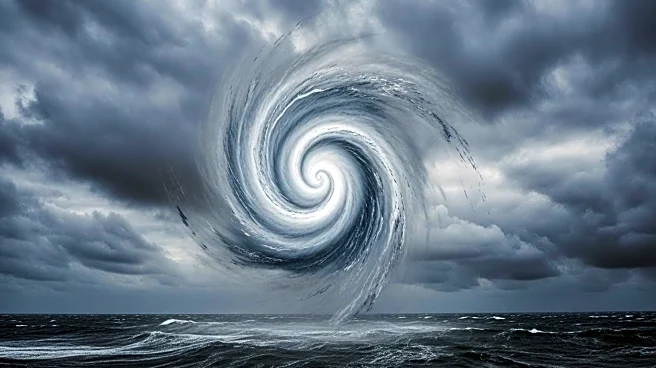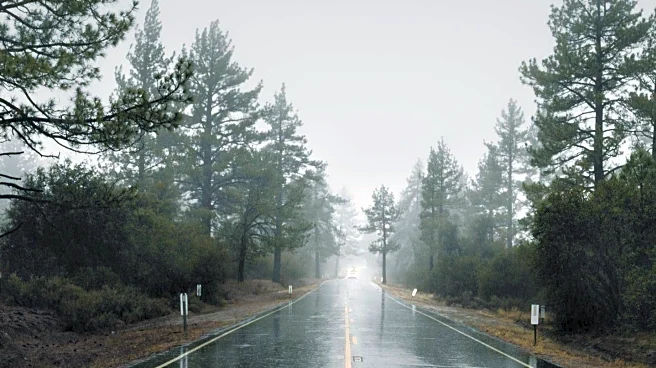What's Happening?
Meteorologists are observing unusual conditions in the Atlantic Ocean during the typical peak of hurricane season. Despite the absence of tropical storms, subtropical oceans have reached record warmth, which may be contributing to fewer storms. The Madden-Julian Oscillation, a tropical cluster of clouds and thunderstorms, is expected to move into the Atlantic, potentially increasing hurricane formation in late September to October. The National Hurricane Center has reported no expected tropical cyclone activity in the next seven days, despite the season's earlier activity with Category 5 Erin.
Why It's Important?
The current lack of hurricane activity in the Atlantic is significant as it deviates from typical seasonal patterns. This could impact industries reliant on weather predictions, such as insurance and agriculture. The warming subtropical oceans may alter storm formation dynamics, potentially leading to fewer but more intense storms. Understanding these changes is crucial for climate scientists and policymakers in adapting to shifting weather patterns and preparing for future storm impacts.
What's Next?
Meteorologists are closely monitoring the Madden-Julian Oscillation's movement into the Atlantic, which could lead to increased hurricane activity. The period from late September to mid-October is expected to be critical for storm formation. Stakeholders, including emergency services and coastal communities, should remain vigilant and prepared for potential storm developments during this time.
Beyond the Headlines
The warming of subtropical oceans and its impact on hurricane formation highlights broader climate change implications. As scientific research suggests declining trends in storm frequency, the focus may shift to the intensity and rainfall of storms that do form. This could necessitate changes in infrastructure and disaster preparedness strategies.












